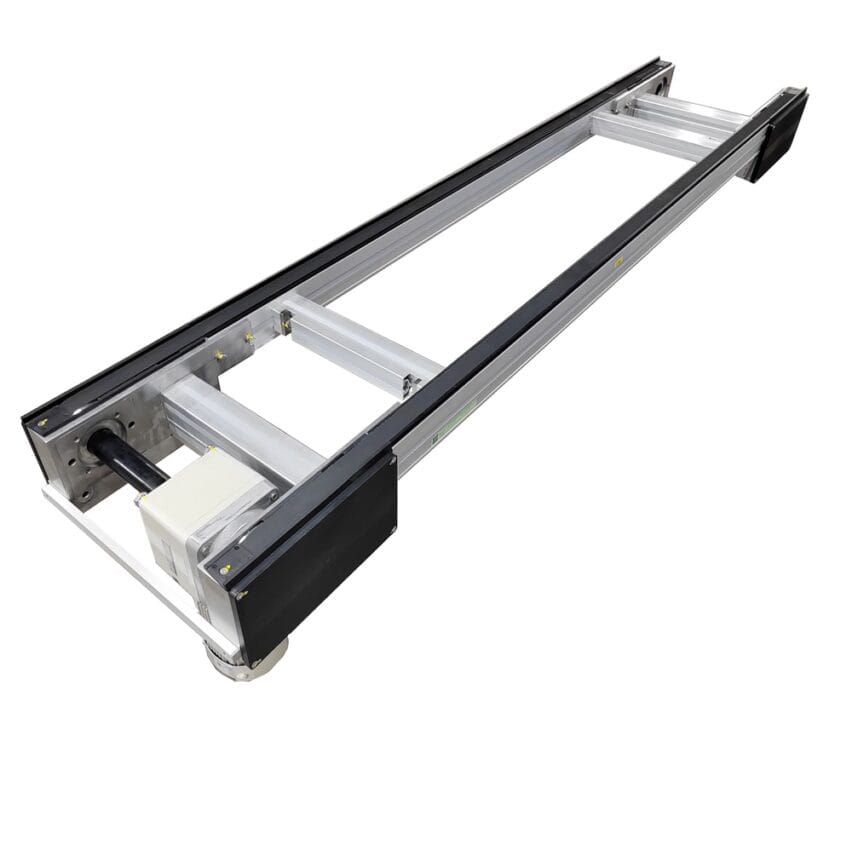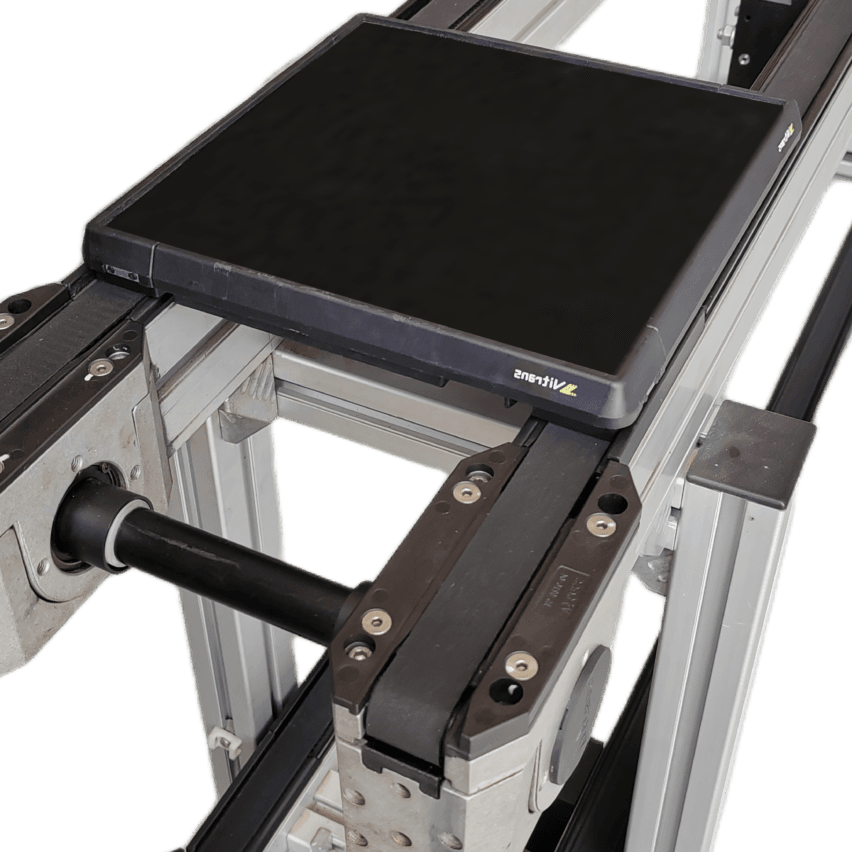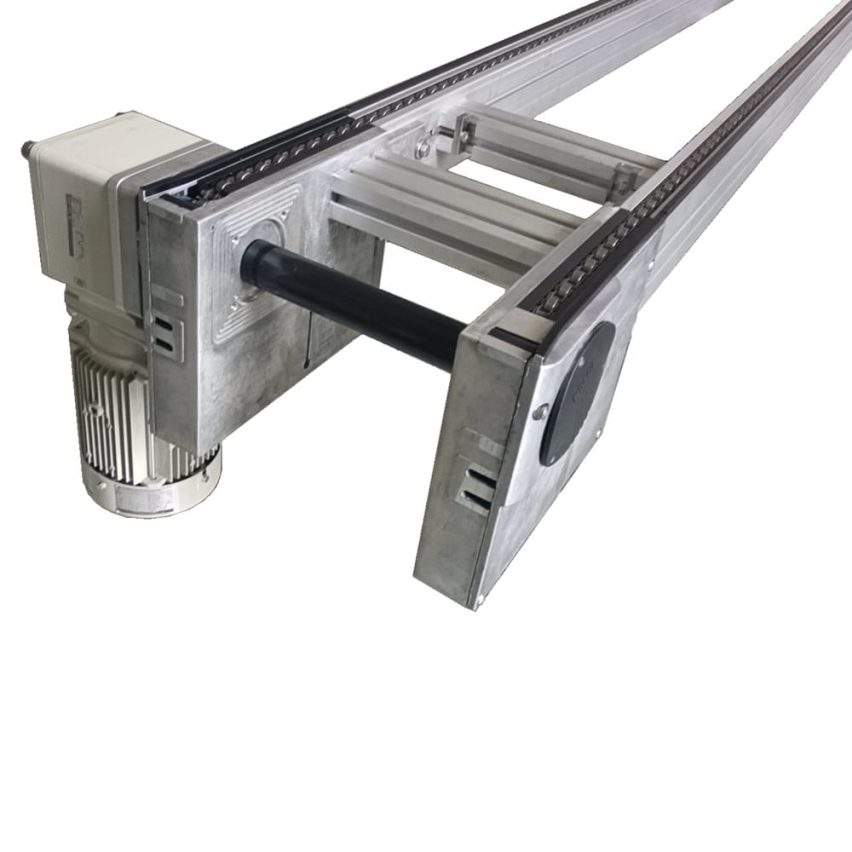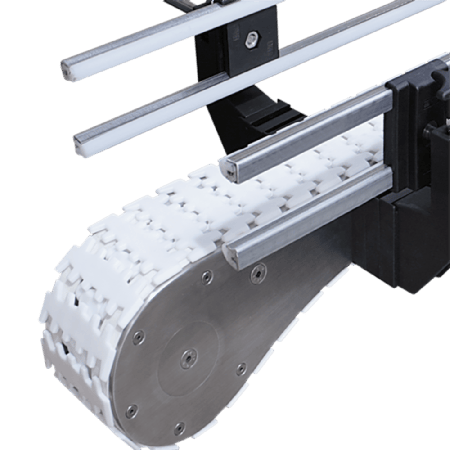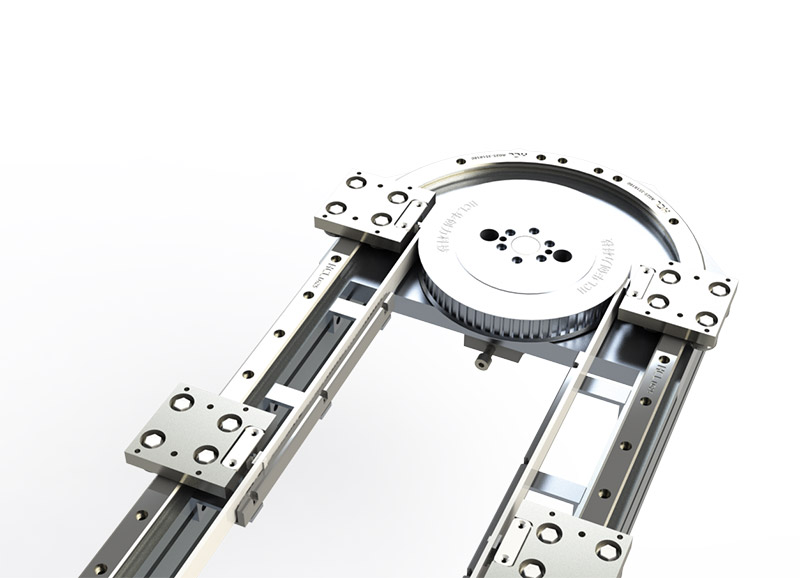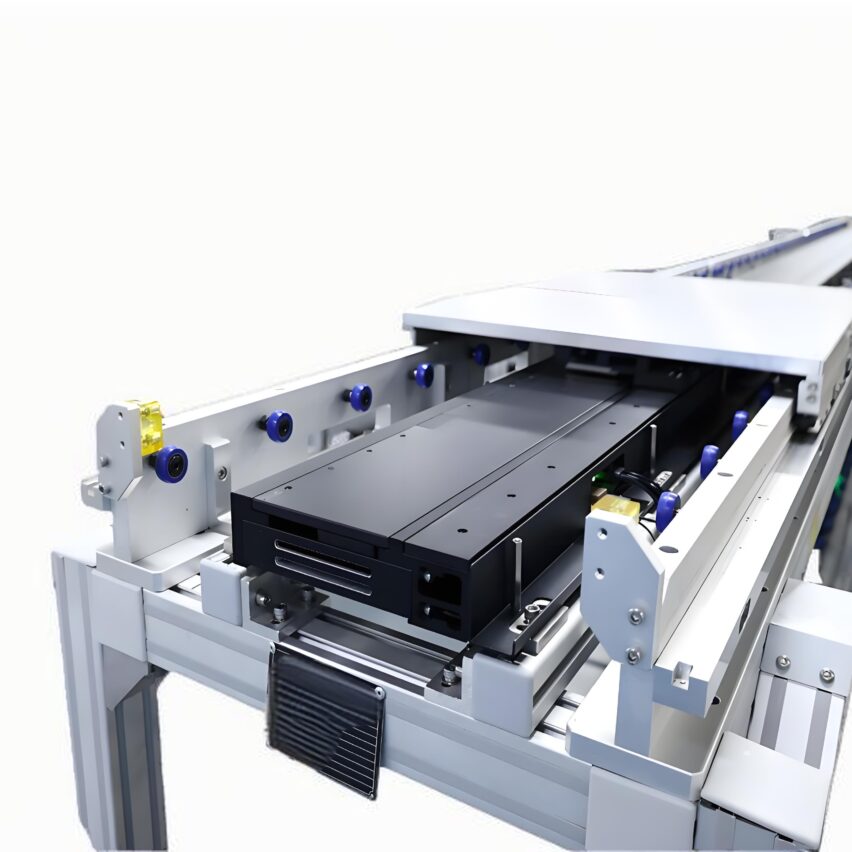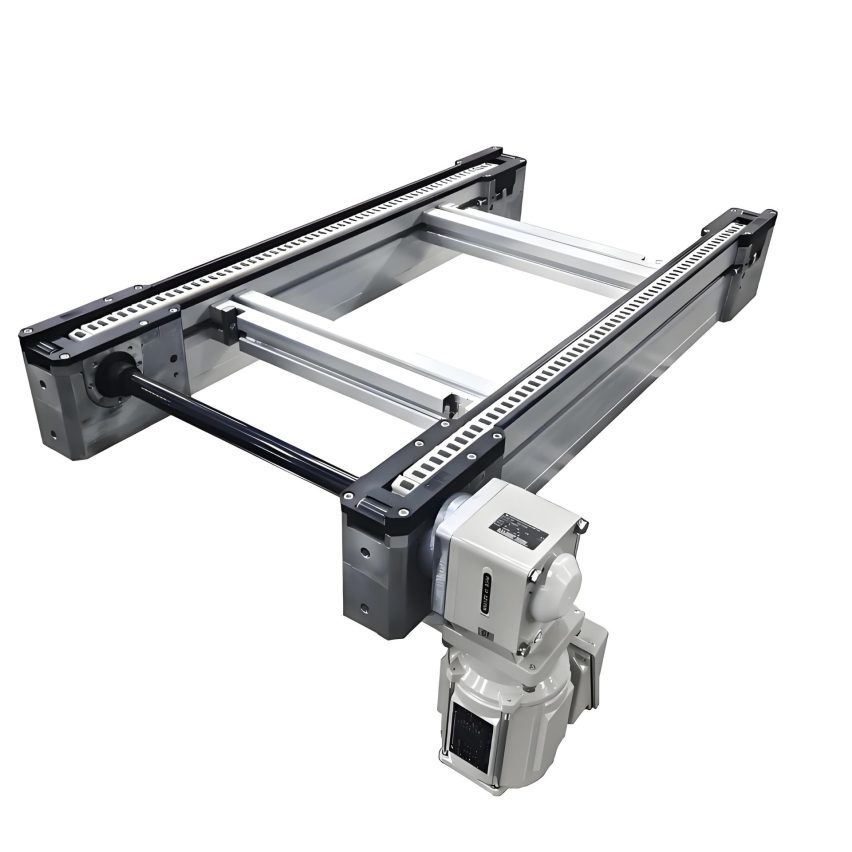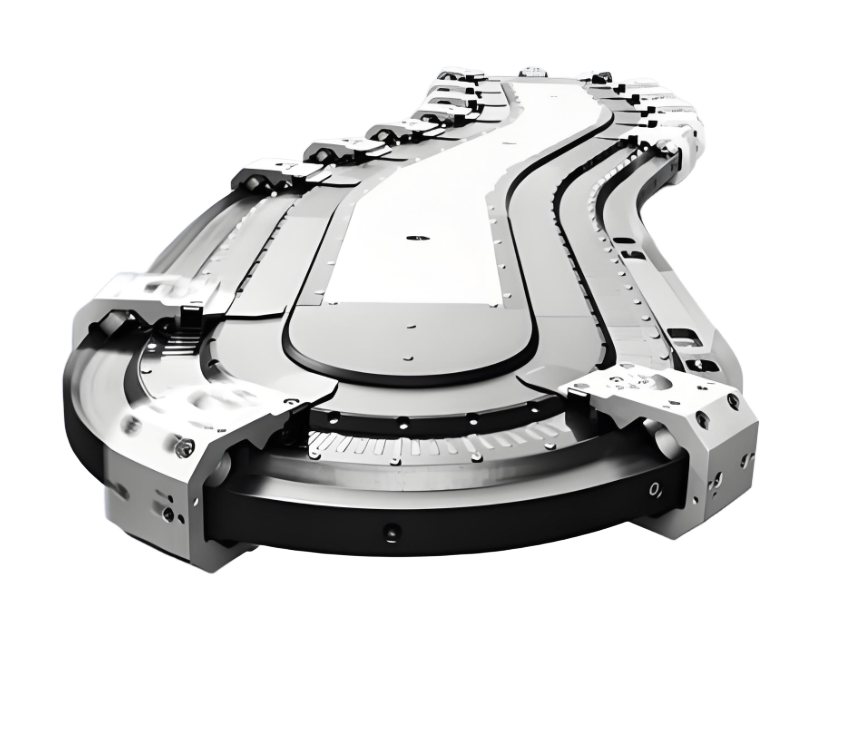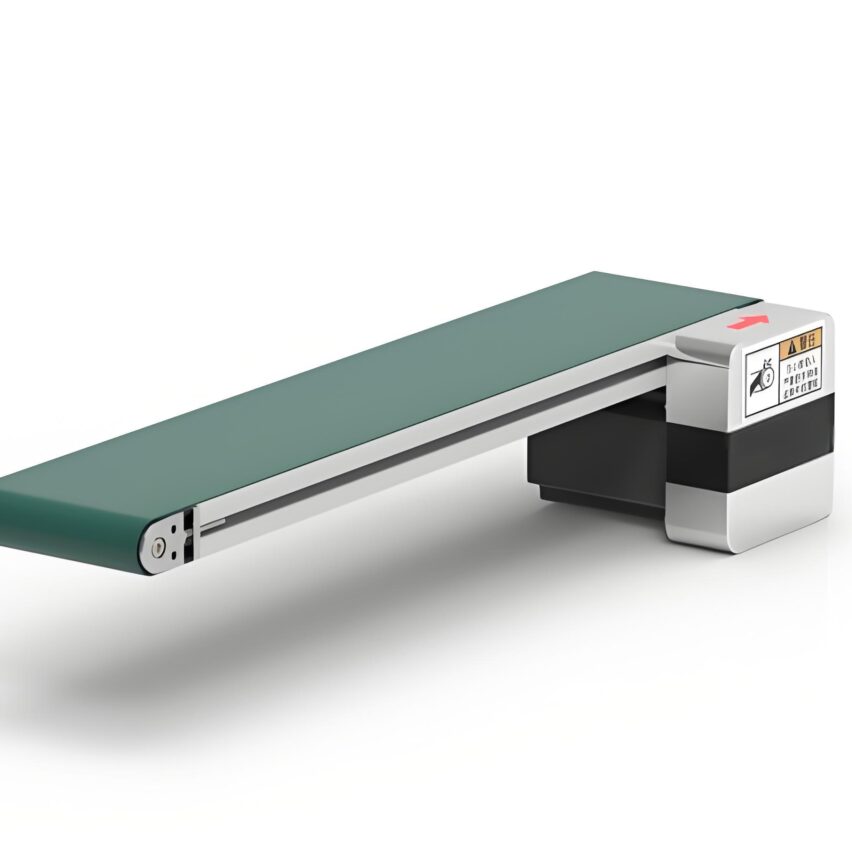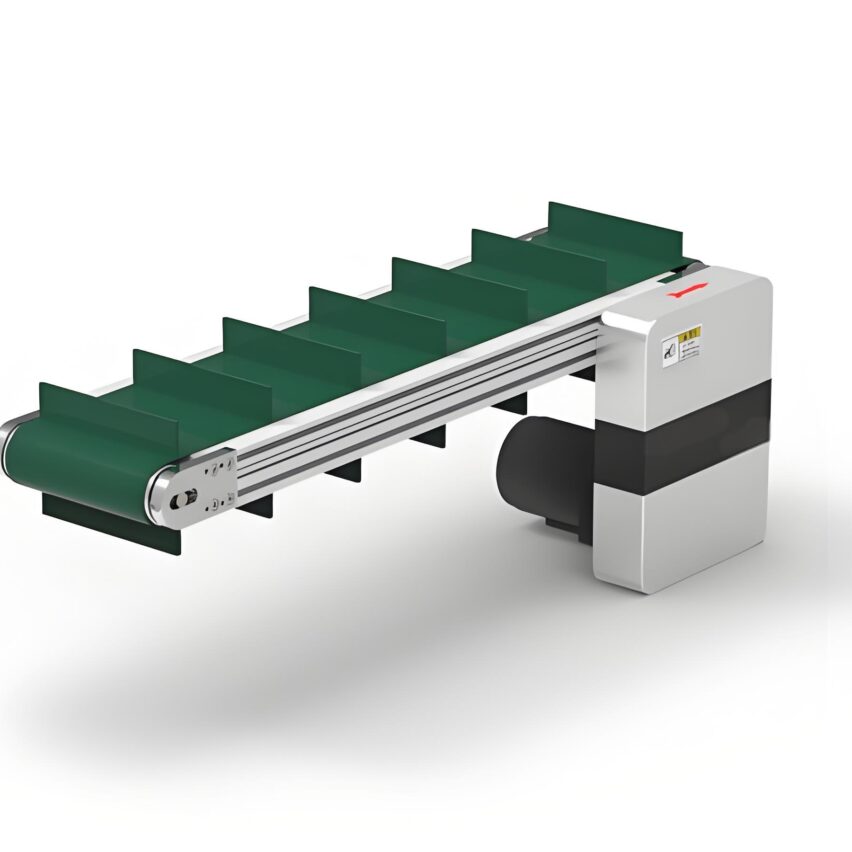I. Technological breakthrough: how the multiplier chain rewrites the conveyor logic
The core value of the double-deck multiplier chain assembly line is thatEfficient reuse of vertical spaceThe design principle is based on"Chain speed equalisation, carrier acceleration."The unique mechanism. When the basic chain runs at a constant speed, the actual moving speed of the work plate can be up to 2.5-3 times that of the chain due to the friction difference between the rollers and the guide rail (i.e., multiplier ratio D/d+1). This speed increasing effect makes the material conveying efficiency increase 200%, and at the same time, the PLC control realises the precise stopping of the work station (±0.5mm positioning accuracy), which lays the foundation for the flexible production.
During the field trip to Tesla's Shanghai factory, I saw that the upper layer of the double-layer multiplier chain with fully loaded battery modules flowed at a speed of 3m/min, and the lower layer of empty trays was returned at a rate of 1m/min. This kind of"Dynamic speed difference"The design allows the production line space utilisation to jump from 65% to 92%, while avoiding the waste of space caused by traditional return belts.
II. Architectural innovation: four technological pivots for two-tier synergy
ralph lauren structural design: precision coupling of circulatory systems
- Shifter hubs: Hydraulic jacking device connects the upper and lower levels, 90° steering is achieved by linear guides, and the efficiency of empty pallet return is increased by 40% (measured data of a 3C factory);
- Differentiated Carrying: Stainless steel chain (50kg/m load) is used for the upper layer and lightweight engineering plastic chain (20kg/m load) is used for the lower layer, reducing the total cost by 18%;
- Modular Interface: The quick release sprocket set supports replacement of wear parts within 10 minutes, reducing maintenance time by 85% compared to conventional construction.
▍同步控制:破解“上下层博弈”困局
| Type of problem | prescription | Technical benefits |
|---|---|---|
| tachychronous | Single motor + double output reducer | Energy consumption down 35% |
| Start-stop timing conflict | PLC synchronisation module + encoder feedback | Beat matching accuracy of 98.7% |
| functional logic contradiction | Layered independent programming (upper level sorting/lower level caching) | Failure rate down 65% |
▍空间折叠术:0.5㎡承载10米产线
- Vertical compression: The double-layer architecture reduces the footprint by 40% for the same capacity (120m2 for a conventional single-layer line, only 72m2 for a double-layer);
- stereo cache (computing): Reserve staging area in the middle level (buffer capacity of up to 200 job boards) to eliminate stoppages due to poor process beats.
▍能耗重构:从动力冗余到精准供能
- magnetic levitation drive: Replacement of conventional motors reduces no-load power consumption by 52% (annual electricity cost saving of 240,000 RMB for one power plant);
- Segmented start/stop technology: Automatic standby in non-operating areas, with a combined energy consumption reduction of 30% compared to a single tier line.
III. Industry reshaping: cross-border conquest from 3C electronics to new energy sources
1. 3C electronics: the ultimate challenge of miniaturised production
- sore pointMobile phone motherboard patch station spacing is only 0.8m, the traditional conveyor line can not be adapted;
- solution (a math problem): Upper 0.5mm precision speed chain to complete the placement, the lower layer of the empty PCB board cycle, a factory in Dongguan to achieve1200 mobile phone assemblies per hour.;
- Value of data: RFID binds the tooling board and product ID to achieve full process traceability (yield 99.3%).
2. New energy batteries: a balancing act between safety and efficiency
- Explosion-proof designLithium batteries integrate a positive pressure ventilation system with a hydrogen concentration of <0.81 TP3T LEL at all times;
- Temperature-resistant innovations: Ceramic coated chain withstands 140°C electrolyte splash (57% reduction in failure rate for Ningde Times project).
3. Automotive assembly: a flexible revolution in mixed-line production
- dynamic beat (music): Automatically adjusts engine station dwell time (±1.5 seconds) by RFID identification of vehicle type (SUV/Car);
- human-machine collaboration: Lateral extension of the operator's platform on the lower return line, with workers in a standing position to pick up pieces (bending motion reduced by 80%).
IV. Smart leaps: how the data chain reconfigures value
1. Generational evolution of control systems
- basic version: Relay controlled blocker with 0.5 second response delay and 8% jam rate;
- Smart Edition: Machine vision positioning + pneumatic servo valve, response time 0.1 seconds, sorting accuracy 99.2%.
2. Economic accounts for predictive maintenance
- traditional model: Fixed cycle for chain replacement (cost $180,000/year);
- data-driven: Vibration sensors + AI algorithms to predict wear and tear (maintenance reduced to $70,000/year, downtime reduced by 400 hours).
3. The rise of subscription-based business models
- metre-based: Paying a monthly fee of $1200/m (including maintenance) and equipment utilisation of 91%;
- Shared production lines: 23 small factories in the PRD share a smart double-layer chain with a cost-sharing of 60% during capacity fluctuations.
Five questions about the core of the double-layer multiplier chain
Q1: Does the speed difference between the upper and lower levels cause pallet collisions?
Dynamic spacing control technology::
- The laser distance measuring module adjusts the lifting rhythm of the lift in real time (spacing error <2mm);
- The Shanghai Automobile Factory case proves that the congestion rate is reduced to 0.31 TP3T.
Q2: How can MSMEs afford high costs?
Asset-light transformation path::
- Core architecture self-research + sheet metal outsourcing (manpower cost down 40%);
- Replacement of stainless steel with carbon steel for non-load bearing sections (initial investment reduced by 28%).
Q3: Can the maximum tilt angle exceed 30°?
Magnetic guide breakthrough::
- Permanent magnet array generates 18N/cm² of adsorption force (PV panels are transported tilted without slipping);
- LONGi Green Energy 35° tilt angle production line fragmentation rate 0.05%.
Q4: How does the food industry solve cleaning challenges?
Aseptic closed-loop design::
- 304 stainless steel chain + food grade grease (FDA compliant);
- Interlayer EPP partition + negative pressure air curtain (microbial growth rate reduced by 99%).
Q5: Will it be replaced by AGV in the future?
ecological niche of synergy::
- Multiple speed chain for fixed beat process (cost <1/3 of AGV);
- AGVs for flexible handling, interacting at the transfer machine via RFID.
Exclusive Data Insight: Global Double Layer Multiplier Chain Market Size to Surpass by 2026$12 billionBut the technological divide has taken shape."dual-track system" - Low-end homogenised products are deep in a price war (gross profit <12%), while mastery of themultilayer collaborative algorithm(e.g. the no-load-to-full-load speed ratio is dynamically optimised to 1:2.4) ormodular protocol(Quick release interface patent CN114056816A) of the enterprise, is to 35% above the gross profit margin harvest high-end market. In the next three years, the key to winning the industry will shift from "hardware stacking" to "hardware stacking".Spatial datamining capabilities": 5,000 pieces of operational data are generated per minute per metre of production line, and congestion points are predicted through digital twin modelling, enabling physical space utilisation to approach the theoretical extreme of 98%. As German engineer Hermann asserts."The best assembly lines don't have chains, only flowing data and precise decisions."

